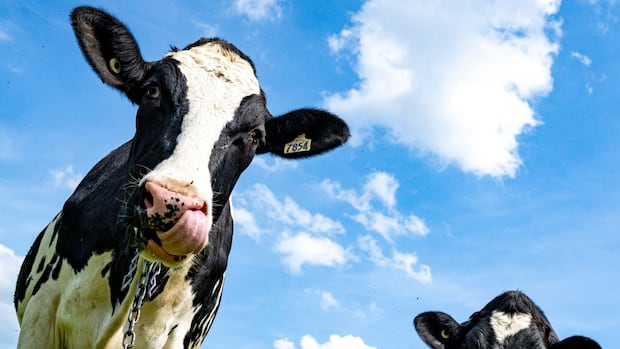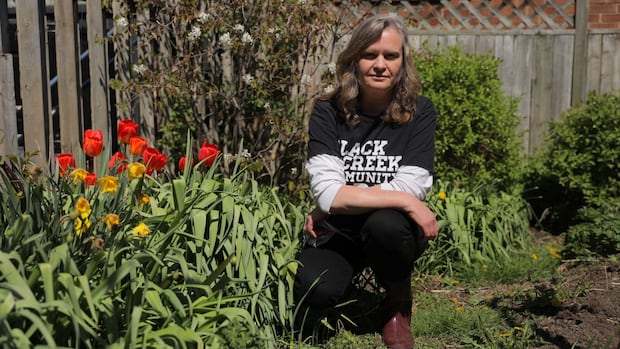Shortly after 1 a.m. on Tuesday, Mark Carney walked onto a stage at the old Ottawa civic centre — the same hockey arena where John Turner was elected Liberal leader in 1984, the last time the Liberals tried to replace a member of the Trudeau family — and promised to be guided by the “strong Canadian values” of humility, ambition and unity.
“It is a time to be bold, to meet this crisis with overwhelming positive force of a united Canada,” he said.
With that, Carney capped what could be the most remarkable four-month period in the history of Canadian politics — an incredible sequence of events that began, shockingly, on the morning of Dec. 16.
When the country awoke that day, Justin Trudeau was still prime minister, Joe Biden was still the U.S. president, Donald Trump’s comments about Canada becoming the 51st state were still just a joke, and Pierre Poilievre’s Conservatives had a 21-point lead over the Liberals in opinion polls.
Trudeau’s Liberals were on pace to be not just replaced, but routed by a populist conservative who vowed to do things very differently.
Then Chrytia Freeland phoned the prime minister and told him she was resigning as finance minister.
Trudeau announced his intention to resign on Jan. 6. Ten days later, Carney entered the race to replace him. Four days after that, Trump was inaugurated.
The new president launched a trade war against this country less than two weeks later. Five days after that, Trudeau told a Toronto audience what many Canadians had already come to fear: that Trump’s comments about Canada becoming the 51st state were not a joke.
On March 9, Carney was elected leader of the Liberal Party. On March 23, he asked the Governor General to dissolve Parliament for a new election.
Thirty-six days later, Carney has won his own mandate, and this dizzying swirl of history has produced a uniquely split result — one that may only underline the challenges that are waiting for this country and the prime minister on the other side of the campaign.
Measured by popular vote, this would be the best Liberal result since 1980. At 43.5 per cent, Carney would beat anything the Liberals received under Jean Chrétien or Justin Trudeau, even while they were winning majorities in the House of Commons.
It had, in fact, been 25 years since any party reached 40 per cent. But on Monday night, amazingly, two parties finished above that threshold.
At 41 per cent, the Conservatives’ share of the popular vote would be the highest in the 20-year history of the party — two points higher than when Stephen Harper’s Conservatives won a majority in 2011 — and the best result for any right-of-centre federal party since 1988.
The last time two parties each won more than 40 per cent of the popular vote was 1930, when R.B. Bennett’s ill-fated Conservatives bested Mackenzie King’s Liberals.
CBC News projects the Liberals will form the next government and that Liberal Leader Mark Carney will be elected to his first seat in the House of Commons in his suburban Ottawa riding of Nepean. Carney, speaking in Ottawa on election night, says he will always do his ‘best to represent everyone who calls Canada home.’
Poilievre tries to look on the bright side of a stunning defeat
A subdued but defiant Poilievre told supporters shortly after midnight that they had “much to celebrate tonight.” But he was “cognizant of the fact that we didn’t quite get over the finish line yet” — that last word no doubt meant to set up an argument for Poilievre staying on as leader of the Conservative party.
“We know that change is needed, but change is hard to come by,” Poilievre said. “It takes time, it takes work, and that’s why we have to learn the lessons of tonight so that we can have an even better result the next time Canadians decide the future for the country.”
Compared to their result in 2021, the Conservatives made significant gains — in votes and in seats. And in any normal election, 41 per cent of the vote might have been expected to translate into a majority of seats.
But compared to where the party stood just four months ago, this is also an incredible reversal of fortune. And so what lessons will the Conservatives choose to learn?
At various points of this campaign, it was argued that Poilievre should pivot. And perhaps the Conservative leader could have somehow focused more of his rhetorical energy and policy agenda on the threat posed by Trump. But if Poilievre’s problem was deeper than that — if it was who he is, how he does politics and how closely that compares with Trumpism — his actual ability to pivot was limited.
As this campaign came to a close, the most telling sign of where things stood for the Conservative party seemed to be Poilievre’s absence from the party’s final television ads — a tacit admission that the man who Conservatives wanted to be prime minister was not liked by the voters the party needed to win.
In its final poll before election day, Abacus Data found that 44 per cent of Canadians had a negative view of Poilievre, compared to 41 per cent who had a positive view. The Angus Reid Institute found an even dimmer view of the Conservative leader — 57 per cent of respondents said they had an unfavourable view, while 38 per cent had a favourable view.
The 2025 election became a stark and binary choice between Poilievre and Carney — to the detriment of the NDP and Bloc Québécois — and Poilievre lost.
Conservatives might tell themselves they were just unlucky and that they are now well-positioned to win the next election — indeed, Poilievre’s speech on Monday night, in which he was theoretically conceding defeat, sounded more like his attempt to get a head start on the next campaign.
But is it possible that a different Conservative leader would have gotten over the finish line?
If the Liberals are held to a minority, the next election could come sooner rather than later. But how much tougher will it be for Poilievre to hang on if the Liberals manage to pull out a majority?
Either way, if Poilievre is intent on remaining leader, he will at least now have to find a new seat — Liberal candidate Bruce Fanjoy having pushed the Conservative leader out of Carleton, a riding Poilievre had held for 20 years.
Conservative Leader Pierre Poilievre, speaking to supporters in Ottawa on election night, suggests he has no intention of stepping down. At the time of his speech, Poilievre was trailing in his own Ontario riding of Carleton.
Carney won the Trump argument — and enough of the change argument
In the waning days of this campaign, Poilievre leaned ever harder on the idea of “change.” And understandably so — if this had merely been a campaign about change, the Conservatives would have won decisively.
But for half of the electorate, this was an election about Trump — and Carney was the decisive winner among those voters.
Crucially, Poilievre’s advantage on change was not quite as wide as Carney’s on the question of Trump. Pollara found similarly when it asked voters to decide between “change” and “stability” — for a significant number of voters who wanted change, the move from Trudeau to Carney seems to have been enough.
Carney did not look or sound like Trudeau. They had different life stories, different experiences and emphasized different things — and Carney quickly moved to bury the consumer carbon tax, the most contentious element of Trudeau’s agenda.
“I chose to enter politics, because I knew we needed big changes in this country,” Carney said on Tuesday morning, repeating a message he put front and centre when he launched his leadership campaign in January.
And while Conservatives might ask themselves how Poilievre lost this campaign, Carney should be given full credit for winning it.
Before he entered the Liberal leadership, it was easy to imagine how he might fail. He came from the world of high finance and spoke with all the verve and flair of a central banker. And he’d never sought political office before.
But in this particular moment, his calm and mannered bearing seemed to be what Canadians wanted. Despite repeated Conservative attacks, his background was viewed as an asset. His limitations (including his rusty French) were forgiven. What Canadians saw and knew of Carney, they seemed to largely like — Abacus found a positive-negative split of 46 per cent to 34 per cent for the Liberal leader, putting Carney just slightly behind where Trudeau was when the Liberals swept to power in October 2015.
So where Turner only briefly revived the Liberal party before falling flat in the 1984 election campaign, Carney succeeded beyond anything any Liberal could have reasonably hoped for last December.
Now comes the even harder part
Having campaigned on the promise of leading the country through the crisis posed by the Trump administration, Carney now faces the considerable challenge of actually doing that. In the early hours of Tuesday morning, Carney cautioned that the “coming days and months will be challenging and they will call for some sacrifices.” But he vowed to “fight” and to “build” and “think big and act bigger.”
He has been, from Day 1, a crisis leader. And the sheer extent of the Trump crisis may only still be coming into view. But Carney might now have a rare opportunity to unite the country around action.
Whether the Liberals eventually end up with a majority or a minority in the House, Carney also now faces the rare task of governing the country after more than 40 per cent of voters cast a ballot for the party that will be the Official Opposition. In his speech to Liberal supporters, Carney acknowledged that “millions of our fellow citizens preferred a different outcome.”
Carney has contrasted the unity of Canadians with the division in the United States, but that unity may be freshly tested now.
Before Freeland called Trudeau and changed the course of Canadian history, the prevailing crisis was what has come to be known as the “cost of living.” Inflation had taken its toll. Housing was unaffordable. (Economists and business groups were also fretting about Canada’s GDP per capita.)
Time had also worn down the Trudeau government — they had reached the point at which most governments would have struggled to win re-election. But beyond the public’s general fatigue with Trudeau, the Liberals were also struggling to fulfil the promise of economic and financial security — something that Trudeau himself understood as a promise that needed to be realized if progressives and liberals were to stem the rising tide of populism.
Carney gave the Liberal party new life and new leadership. And Trump gave Carney a moment he seemed made for.
The reward is the opportunity and the responsibility to tackle crises both old and new.







